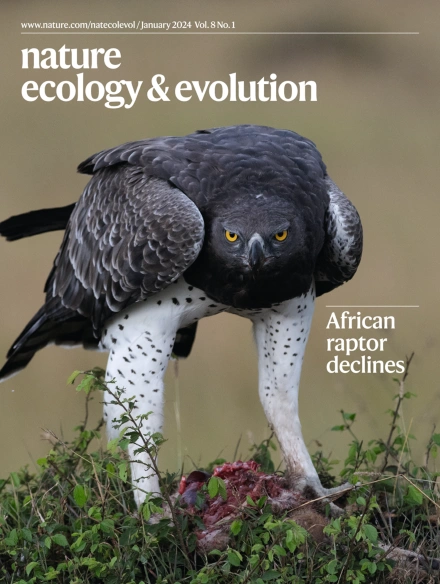适应性生态系统恢复以减轻人畜共患病风险。
IF 13.9
1区 生物学
Q1 ECOLOGY
引用次数: 0
摘要
传染病对全球卫生安全构成重大威胁。关键的野生动物物种可能藏匿着大量的人畜共患病原体,它们正越来越多地被迫适应土地利用变化、人类入侵和气候变化带来的干扰。虽然有关退化和干扰的人畜共患疾病风险增加的证据相当有说服力,但关于生态系统恢复对人畜共患疾病溢出的缓解作用的科学文献是分散的、不确定的,并且由于缺乏概念框架和实际指导而受到挑战。鉴于不断增加的恢复需求和活动,我们概述了在检查生态系统恢复中人畜共患疾病影响时的六个关键考虑因素:(1)评估人畜共患疾病目标;(2)恢复与恢复之间的时间差;(3)营养化野化一体化;(4)稳健的研究设计;(5)控制混杂和修改驱动程序;(6)利益相关者参与并与社区共同创造。如果不考虑这些因素,就会使恢复的科学贡献变得不那么有价值,甚至可能危及扭转全球生物多样性下降的全球努力。本文章由计算机程序翻译,如有差异,请以英文原文为准。
Adaptive ecosystem restoration to mitigate zoonotic risks.
Infectious diseases pose a substantial threat to global health security. Key wildlife species, potentially harbouring numerous zoonotic pathogens, are increasingly being forced to adapt to disturbances from land-use change, human encroachment and climate change. Although the evidence is rather convincing pertaining to the increased risks of zoonotic diseases with degradation and disturbances, the scientific literature on the mitigating effects of ecosystem restoration on zoonotic spillover is scattered, inconclusive and challenged by the lack of a conceptual framework and practical guidance. In light of rising restoration needs and activities, we outline six critical considerations when examining impacts of zoonotic diseases from ecosystem restoration: (1) assessment of zoonotic disease targets; (2) time lag between restoration and recovery; (3) integration of trophic rewilding; (4) robust study designs; (5) controlling for confounding and modifying drivers; and (6) stakeholder engagement and co-creation with communities. Failure to account for these considerations makes the scientific contribution of restoration less valuable and may even jeopardize global efforts to reverse the global biodiversity decline.
求助全文
通过发布文献求助,成功后即可免费获取论文全文。
去求助
来源期刊

Nature ecology & evolution
Agricultural and Biological Sciences-Ecology, Evolution, Behavior and Systematics
CiteScore
22.20
自引率
2.40%
发文量
282
期刊介绍:
Nature Ecology & Evolution is interested in the full spectrum of ecological and evolutionary biology, encompassing approaches at the molecular, organismal, population, community and ecosystem levels, as well as relevant parts of the social sciences. Nature Ecology & Evolution provides a place where all researchers and policymakers interested in all aspects of life's diversity can come together to learn about the most accomplished and significant advances in the field and to discuss topical issues. An online-only monthly journal, our broad scope ensures that the research published reaches the widest possible audience of scientists.
 求助内容:
求助内容: 应助结果提醒方式:
应助结果提醒方式:


